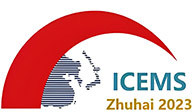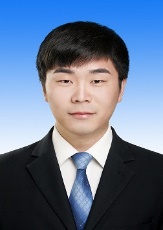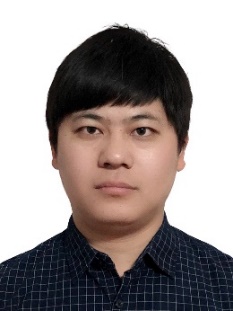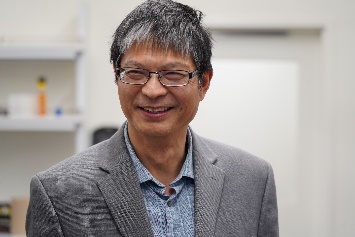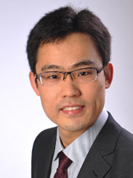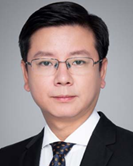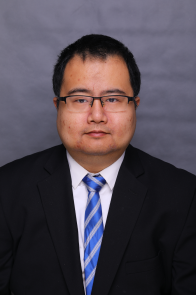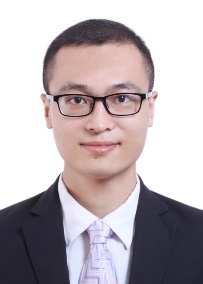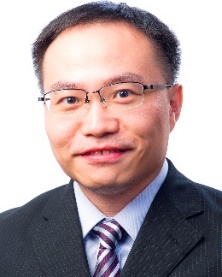Tutorial

1
Parameter Identification and Auto-Tuning for Position Sensorless PMSM Drives

|
Speaker(s) |
Name |
Qiwei Wang |
|
|
Title |
Assistant Professor, IEEE Member |
||
|
Affiliation |
Harbin Institute of Technology |
||
|
|
wqwhit@hit.edu.cn |
||
|
Name |
Binxing Li |
|
|
|
Title |
Assistant Researcher, IEEE Member |
||
|
Affiliation |
Harbin Institute of Technology |
||
|
|
LBX@hit.edu.cn |
||
|
Name |
Guoqiang Zhang |
|
|
|
Title |
Professor, IEEE Senior Member |
||
|
Affiliation |
Harbin Institute of Technology |
||
|
|
ZhGQ@hit.edu.cn |
||
|
Name |
Gaolin Wang |
|
|
|
Title |
Professor, IEEE Senior Member |
||
|
Affiliation |
Harbin Institute of Technology |
||
|
|
WGL818@hit.edu.cn |
||
|
Abstract |
Permanent magnet synchronous machine (PMSM) has been applied in the wide spectrum of industry, including but not limited to renewable energy, transportation, military, and medical systems, thanks to the advantages of high-power density and high efficiency. Recently, large effects have been devoted towards the high-performance PMSM drives. However, the PMSM control technologies generally depend on the accurate parameters, making the parameter identification significant. In this tutorial, the PMSM parameter identification technologies for both offline and online operation conditions are to be presented. Meanwhile, as the mean influence of identification accuracy, the inverter nonlinearity effect is fully considered by introducing a compensation technique. Since the changing parameters affect the PMSM control performance, especially the sensorless control, the parameter auto-tuning technique is also presented in the tutorial. The introduced technology combines the offline and online tuning for ensuring the smooth start up and the good control performance under steady- and transient-state of sensorless PMSM drives. This tutorial is available for specialists in power electronics and AC motor drives, which aims to introduce the technical knowledge from both academia and industry perspectives. |
||
2
Design and Control of Switched Reluctance Machines

|
Speaker(s) |
Name |
Jin-Woo Ahn |
|
|
Title |
Professor |
||
|
Affiliation |
Kyungsung University |
||
|
|
jwahn@ks.ac.kr |
||
|
Name |
Zhenyao Xu |
|
|
|
Title |
Professor |
||
|
Affiliation |
Shenyang University of Technology |
||
|
|
xuzy@sut.edu.cn |
||
|
Name |
Grace Firsta Lukman |
|
|
|
Title |
Ph.D. |
||
|
Affiliation |
Pusan National University |
||
|
|
gracefl@pusan.ac.kr |
||
|
Abstract |
This tutorial deals about design and control of Switched Reluctance Machines(SRMs) as well as some selected applications. SRM is well known for the robust and high speed drive capability. Some design guidelines and control methods are introduces with selected applications. |
||
|
Key words |
Switched Reluctance Machine, Design, Control, Application |
||
|
Biography |
Jin-Woo Ahn was born in Busan, Korea, in 1958. He received his Ph.D. degrees in Electrical Engineering from Pusan National University, Busan, Korea, in 1992. He has been with Kyungsung University as a professor in the Dept. Mechatronics Engineering since 1992. His current research interests are advanced motor drive systems including SRM. He is an Editor-in-Chief, IEEE TEC eNL since 2020. He is a Fellow of the KIEE and a Senior member of the IEEE. Zhenyao Xu was born in Liaoning, China, in 1987. He received the B.S. and M.S. degrees in electrical engineering from Shenyang University of Technology, Shenyang, China, in 2009 and 2012, respectively, and the M.S. and Ph.D degrees in mechatronics engineering from Kyungsung University, Busan, Korea, in 2012 and 2016, respectively. He is a Professor in the School of Electrical Engineering, Shenyang University of Technology, China since 2022. He is the author of more than 60 papers and has more than 20 patents. His research interests include electrical machines and their control systems. Grace Firsta Lukman was born in Tangerang, Indonesia. She received her Ph.D. degree in Mechatronics Engineering from Kyungsung University, Busan, Korea in 2023. Currently she is working as a researcher in the Dept. of Electrical Engineering in Pusan National University, Korea. Her research interests are the design and analysis of electrical motors, especially switched reluctance motors. |
||
3
Reliability and Condition Monitoring of Motor Drives for Industrial and EV Applications

|
Speaker(s) |
Name |
Huai Wang |
|
|
Title |
Professor |
||
|
Affiliation |
Aalborg University, Denmark |
||
|
|
hwa@energy.aau.dk |
||
|
Abstract |
With the increasing trends of automotive electrification and manufacturing automation, the requirements for reliability and availability of critical motor drive assets are becoming even more stringent. Additionally, industry-leading companies are striving to transition from mere product suppliers to service providers, emphasizing life-cycle performance and cost of ownership. Reliability is influenced by design, manufacturing, and operation processes. This tutorial addresses the aspects of reliability-oriented design (design phase) and condition monitoring (operation phase), specifically focusing on power electronic components and converters in motor drive applications. The tutorial will encompass the following three parts:
The intended participants for this tutorial are as follows:
|
||
|
Key words |
Power electronics, reliability, condition monitoring, motor drive, electric vehicle |
||
|
Biography |
Huai Wang is a Professor at the Department of Energy, Aalborg University in Denmark. He leads the Reliability of Power Electronic Converters (ReliaPEC) group and is the Mission Leader of Digital Transformation and AI at AAU Energy, with 13 affiliated research groups. His research addresses the fundamental challenges and application issues related to efficient, reliable, and cognitive power electronic converters. Prof. Wang actively collaborates with companies throughout the value chain, from power electronic materials and components to systems. He has initiated four short-term industrial/Ph.D. courses, which have been attended by over 500 Ph.D. students and industry engineers. In addition, he has delivered more than 30 tutorials and given over 100 invited talks.
Prof. Wang received his Ph.D. degree from City University of Hong Kong in 2012 and B.E. degree from Huazhong University of Science and Technology. He has also conducted research as a short-term visiting scientist at the Massachusetts Institute of Technology (MIT) in 2013 and ETH Zurich in 2014. In addition, he was with the ABB Corporate Research Center, Switzerland, in 2009. In recognition of his contributions, Prof. Wang received the Richard M. Bass Outstanding Young Power Electronics Engineer Award from the IEEE Power Electronics Society in 2016. Furthermore, he was Chair of the IEEE IAS/IES/PELS Chapter in Denmark from 2018 to 2020. In 2023, he was elected as a member of the Danish Academy of Technical Sciences.
|
||
4
Electric Propulsion Systems for Electric Aircraft

|
Speaker(s) |
Name |
Chris mi |
|
|
Title |
Distinguished Professor |
||
|
Affiliation |
San Diego State University |
||
|
|
cmi@sdsu.edu | ||
|
Abstract |
The aviation industry accounts for 9% of greenhouse gas emissions from the transportation sector. To address the emissions, NASA's Subsonic Fixed Wing program has set performance targets at -55dB noise at the airport boundary, -75% NOx, and -70% fuel burn relative to 2006-era technology. Electric aircraft could be the most viable solution to achieve these goals. In addition, electric aircraft can reduce operating costs by using electricity instead of jet fuel and reducing overall energy consumption. However, adopting electric propulsion for the long-haul and large-capacity aircraft may not be realistic due to reasons such as weight, cost, and charging times of the battery. Hence, a more practical entry point for introducing electric propulsion in aviation is on short-haul and vertical takeoff and landing (eVTOL) aircraft. In the meantime, aircraft is employing more electric usage in its auxiliary systems. For example, eVTOLs are quiet, efficient, emission-free, and no runway is required when compared to traditional aircraft and helicopters, hence, are ideal for urban transportation and emergency services. This tutorial will cover the fundamentals of electric systems in more-electric and pure-electric aircraft, including electric propulsion systems and energy storage. We will also discuss a novel single-turn electric motor for electric aircraft applications. |
||
|
Key words |
Electric aircraft, electric propulsion, more electric aircraft, eVTOL, electric vertical take of and vertical landing airplanes |
||
|
Biography |
Dr. Mi is the Distinguished Professor and Chair of the Department of Electrical and Computer Engineering at San Diego State University. He is a Fellow of IEEE and SAE. He was previously a faculty member at the University of Michigan-Dearborn from 2001 to 2015, and an Electrical Engineer with General Electric from 2000 to 2001. He also served as the CTO of 1Power Solutions from 2008 to 2011. Dr. Mi has won numerous awards, including the “Distinguished Teaching Award” and “Distinguished Research Award” from the University of Michigan-Dearborn, IEEE Region 4 “Outstanding Engineer Award,” IEEE Southeastern Michigan Section “Outstanding Professional Award,” and SAE “Environmental Excellence in Transportation (E2T) Award.” He is the recipient of three Best Paper Awards from IEEE Transactions on Power Electronics. In 2019, he received the Inaugural IEEE Power Electronics Emerging Technology Award. Mi is the 2022 recipient of the Albert W. Johnson Research Lectureship and distinguished professor, SDSU’s highest research honor. Dr. Mi has published five books, 204 journal papers, 126 conference papers, and 25 issued and pending patents. He served as Editor-in-Chief, Area Editor, Guest Editor, and Associate Editor of multiple IEEE Transactions and served as the General Chair of over ten IEEE international conferences. |
||
5
Recent development of predictive encoderless control for AC motor drives

|
Speaker(s) |
Name |
Zhenbin Zhang |
|
|
Title |
Professor |
||
|
Affiliation |
Shandong University |
||
|
|
zbz@sdu.edu.cn |
||
|
Name |
Fengxiang Wang |
|
|
|
Title |
Professor |
||
|
Affiliation |
Haixi Institutes, Chinese Academy of Sciences |
||
|
|
fengxiang.wang@fjirsm.ac.cn |
||
|
Name |
Ralph Kennel |
|
|
|
Title |
Professor |
||
|
Affiliation |
Technical University of Munich |
||
|
|
ralph.kennel@tum.de |
||
|
Abstract |
Encoderless control for AC motor drives is an important technique to improve system reliability and reduce hardware cost. Recent years, fundamental/high frequency model-based observers, accompanied with vector control technique, has accomplished numerous advances and has been partially applied in industry areas. However, a single fundamental/high frequency model-based method cannot achieve full speed operation, requiring the combination of two methods. In recent years, it has been found that predictive controller has the potential to replace additional pulse signal injection because it can accurately know the output voltage pulse sequences, which can obtain the position information of the salient pole motor by detecting the current slope. This tutorial is aim to introduce the recent development of predictive encoderless control for AC motor drives. In addition to the expected combination of predictive control and pulse signal injection method, the cooperation of predictive control and fundamental frequency model method will also be introduced. |
||
|
Biography |
Zhenbin Zhang (Senior Member, IEEE) received the Ph.D. degree at the Institute for Electrical Drive Systems and Power Electronics (EAL), Technical University of Munich (TUM), Germany, with “summa cum laude”. In 2019, he was selected as a recipient of China's “1000-Talent-Plan”. In 2020, he was appointed as the director for “International Joint Center for Intelligent Energy and Advanced Energy Conversion Systems”. Fengxiang Wang (Senior Member, IEEE) was born in Jiujiang, China, in 1982. He received the Ph.D. degree from the Institute for Electrical Drive Systems and Power Electronics, Technische Universitaet Muenchen, Munich, Germany. Currently, he is working as Full Professor and Deputy Director with the Quanzhou Institute of Equipment Manufacturing, Haixi Institutes, Chinese Academy of Sciences. Ralph Kennel (Senior Member, IEEE) received the Diploma and Dr.-Ing. (Ph.D.) degrees from the University of Kaiserslautern, Kaiserslautern, Germany. Since 2008, he has been a Professor for electrical drive systems and power electronics with Technische Universtät München, Munich, Germany. Dr. Kennel is a fellow of IET (former IEE) and a Chartered Engineer in the U.K.
|
||
6
Advanced Winding Technology: Key Enabler of Next Generation High Power Density Machines

|
Speaker(s) |
Name |
Chris Gerada |
|
|
Title |
Professor |
||
|
Affiliation |
University of Nottingham |
||
|
|
chris.gerada@nottingham.ac.uk |
||
|
Name |
Tianjie Zou |
|
|
|
Title |
Assistant Professor |
||
|
Affiliation |
University of Nottingham |
||
|
|
Tianjie.zou@nottingham.ac.uk |
||
|
Abstract |
With the global drive of pursuing “Net Zero” to deal with climate change, ambitious roadmaps are being made, which translate to significantly improved performance requirements on electrical powertrains for future transportation, at the very heart of which there is the electrical machine. Windings housed within stators of electrical machines are the “central pivot” of electromechanical energy conversion, operating at inherently higher temperatures due to DC and AC power losses, which to a large extent determine the motor’s power density level. The ever increasing requirements on power density and efficiency of electrical have prompted a revolution of winding technologies. Emerging winding solutions based on advanced manufacturing are being actively proposed, validated and applied, with preformed conductors to replace stranded wires and gain step-change performance improvements on multi-physics domains. The speakers in this tutorial will first of all give an introduction on advances of winding technology over recent years, and focus on hairpin winding as an example to show how advanced manufacturing could improve winding performance. Then, the basic electromagnetic design guidelines will be thoroughly explained, with flexibility and limitation of winding layout selection as well as conductor size optimisation highlighted. Moreover, the tutorial will also dive into the topic of intensive cooling for advanced winding solutions, by looking into modelling techniques and experimental validation, to provide guidelines on more effective thermal management for next generation high power density electrical machines. Finally, winding demonstrators developed by Power Electronics, Machines and Control (PEMC) Group within University of Nottingham will be introduced. |
||
|
Key words |
Power density, advanced manufacturing, intensive cooling, hairpin winding. |
||
|
Biography |
Chris Gerada received the Ph.D. degree in numerical modeling of electrical machines from the University of Nottingham, Nottingham, U.K., in 2005. He was a Researcher with the University of Nottingham on high-performance electrical drives and on the design and modeling of electromagnetic actuators for aerospace applications. In 2008, he was appointed as a Lecturer in Electrical Machines; in 2011, as an Associate Professor; and in 2013, as a Professor with the University of Nottingham. Tianjie Zou received the BEng degree in 2013 and Ph.D. degree in 2018, both in electrical engineering, from Huazhong University of Science and Technology, Wuhan, China. He joined the University of Nottingham, UK, in 2018, as a research fellow within the Power Electronics, Machines and Control (PEMC) Group. In 2020, he was awarded the tenure track Nottingham Research Fellowship and started his independent research career, working towards boosting power density of hundreds kW to MW level electrical machines for automotive traction and aerospace propulsion. |
||
7
Power electronics converters for open-winding motor drives

|
Speaker(s) |
Name |
Dong Jiang |
|
|
Title |
Professor |
||
|
Affiliation |
Huazhong University of Science and Technology |
||
|
|
|||
|
Name |
Zicheng Liu |
|
|
|
Title |
Associate Professor |
||
|
Affiliation |
Huazhong University of Science and Technology |
||
|
|
|||
|
Abstract |
This tutorial gives an introduction on the recent technologies in the power electronics converters for open-winding motor drive. Compared with traditional three-phase AC motors with Y-connected windings, the open-winding structure has many potential advantages such as wide speed operation range, fast dynamic response, more control freedoms, and strong fault-tolerant capability. Therefore, the topology and control of power electronic converter for open-winding motor drive has important theoretical research value and engineering practice significance. Three major types of open-winding motor are used as examples to study: reluctance motor, multiphase open-winding AC machine and active magnetic bearings (AMB). They share the similarity of open-winding structure, but are for different performance and targets. Systematic study of these kinds of open-winding motor drive has been done in recent years. In this tutorial, the optimization progress of the open-winding reluctance motor drive is introduced step by step. Further, several novel technologies of multiphase open-winding AC motor drive are introduced. A novel kind of multiphase open-winding motor drive: series-winding motor drive (SWMD) is introduced, which is able to be applied in normal AC motor and increase the voltage utilization range significantly. Moreover, a Re-configurable open-winding multiphase drive is introduced, which is able to reconfigured the circuit for the faulty phase and maximize the torque output capability of the post-fault drive system. Open-winding power electronics controller is one of the most important part in the active magnetic bearing system.This presentation introduces progress in the power electronics controller for AMB system. One progress is the topologies for multi-axis AMB, to reduce the power electronics devices and power losses by device sharing principle. The other progress is the fault-tolerant AMB drive, to re-construct the levitation force after failure of power electronics device and improve the reliability. This tutorial gives a road map for research and application of power electronics converters in the area of open-winding motor drive. |
||
|
Key words |
Open winding motor drives, magnetic bearing, multiphase, SWMD |
||
|
Biography |
Dong Jiang (Senior Member, IEEE) received the Ph.D. degree in power electronics and motor drives in 2011 in the University of Tennessee, Knoxville, TN, USA. He has been with the HUST, Wuhan, China, as a Professor. Dr. Jiang was the recipient of several best paper awards in IEEE conferences. He is an Associate Editor for the IEEE Transactions on Industry Applications and the chair of IEEE Power Electronics Society Wuhan Chapter. Zicheng Liu (Senior Member, IEEE) received the Ph.D. degree in Electrical Engineering from Tsinghua University, Beijing, China, in 2016. During Jun. 2016 to Sep. 2018, he was a postdoc researcher at Beijing Jiaotong University, Beijing, China. He is currently an associate professor at HUST.
|
||
8
Design, Analysis and Control of Advanced Electric Machines

|
Speaker(s) |
Name |
Chunhua Liu |
|
|
Title |
Professor |
||
|
Affiliation |
City University of Hong Kong |
||
|
|
|||
|
Name |
Zaixin Song |
|
|
|
Title |
Research Assistant Professor |
||
|
Affiliation |
The Hong Kong Polytechnic University |
||
|
|
|||
|
Name |
Senyi Liu |
|
|
|
Title |
Distinguished Research Fellow |
||
|
Affiliation |
Tongji University |
||
|
|
|||
|
Abstract |
This tutorial will demonstrate three key areas in the field of electric machines. In the first section, we will delve into the design of emerging permanent magnet machines. We will explore the latest advancements in magnet materials, geometries, and configurations, aiming to achieve higher power density and efficiency. Through case studies and practical examples, we will showcase innovative design techniques that enable the development of next-generation electric machines. In the second section, we will focus on advanced modeling and analysis methods for electric machines. This section will cover various analytical modeling approaches, optimization techniques, and multiphysics analysis tools. Attendees will gain insights into how to accurately simulate and predict the performance of electric machines, allowing for informed design decisions and performance improvements. In the third section, we will introduce the application of model predictive control to advanced motor drive control systems, including applicability scenarios, parameter selection, performance characteristics, sources of advantages, and future trends. The control framework has unique dynamic performance advantages and is flexible enough to be replicated in different applications. |
||
|
Key words |
Electric machines, Permanent magnet machines, multiphysics modeling, model predictive control. |
||
|
Biography |
Prof. Chunhua Liu received Ph.D. degree in electrical and electronic engineering from The University of Hong Kong. Currently, he serves as Professor at City University of Hong Kong, Hong Kong SAR, China. He is an RGC Research Fellow, Distinguish Lecturer of IEEE Vehicular Technology Society (VTS), and World's Top 2% Scientists according to metrics compiled by Stanford University. Also, he is Chair & Founder of both Hong Kong Chapter, IEEE Vehicular Technology Society, and Hong Kong & Guangzhou Joint Chapter, IEEE Industrial Electronics Society, respectively. Dr. Zaixin Song received the Ph.D. degree majoring electrical engineering at City University of Hong Kong (CityU), Hong Kong, in 2021. In September 2021, he worked as a postdoctoral research fellow in CityU. In July 2022, he worked as a postdoctoral research fellow in Nanyang Technological University, Singapore. Currently, he is working as a Research Assistant Professor in State Key Laboratory of Ultra-precision Machining Technology (SKL-UMT), Department of Industrial and Systems Engineering at The Hong Kong Polytechnic University. Dr. Senyi Liu received Ph.D. degree from City University of Hong Kong (CityU) in 2021. Currently, he is a distinguished research fellow in Tongji University.
|
||
